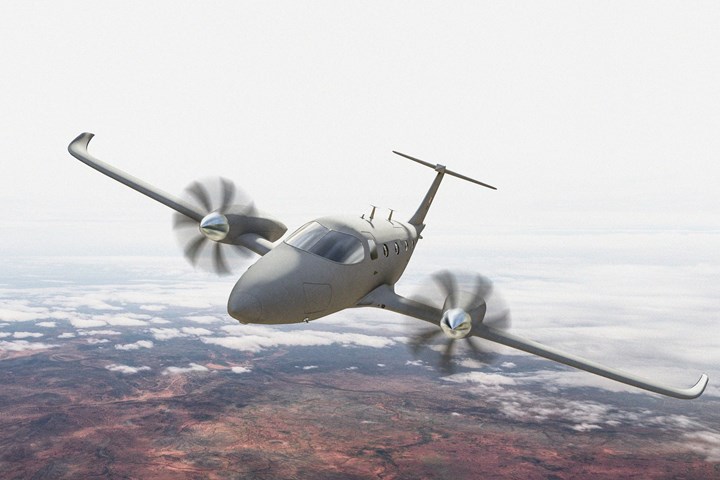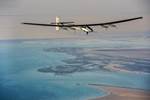Bye Aerospace, L3Harris Technologies team develop all-electric multi-mission composite aircraft
Combined team will modify eFlyer 800, evaluate configurations for zero emissions and low operating cost for multi-modal military applications.

Artist renderings of the eFlyer 800 missionized by L3Harris Technologies. Photo Credit: L3Harris Technologies
On April 28, global aerospace and defense company L3Harris Technologies (Melbourne, Fla., U.S.) and Bye Aerospace (Denver, Colo., U.S.) signed an agreement to develop an all-electric, multi-mission aircraft through modification of the recently announced eFlyer 800 to provide intelligence, surveillance and reconnaissance (ISR) capabilities for domestic and international ISR mission operators. Like Bye Aerospaces’ upcoming all-electric eFlyer 2 prototype this aircraft will also be taking advantage of composite materials.
“The range and speed of the eFlyer 800 is achievable with a low profile and lightweight airframe that will utilize the latest advancements the composites industry has to offer,” says George E. Bye, CEO of Bye Aerospace. “The aerodynamics of traditional metallic structures, like those found in legacy twin turboprops, inhibit the benefits of electric-powered aircraft.”
The eFlyer 800, an eight-seat, all-electric, twin-motor aircraft, features twin 500-kilowatt (670-horse power) electric engines, said to be well suited for the ISR mission. The eFlyer 800 will reportedly offer excellent mission range, persistent overwatch and payload capacity with the added benefits of one-fifth of a traditional turboprop’s operating cost, zero emissions and a minimal logistical footprint for operations in the field.
Bye Aerospace and L3Harris Technologies note that eFlyer 800’s all-electric motors do not combust fuel with air. Instead, they create torque from electricity alone, removing legacy turboprop engine limitations. All-electric propulsion enables the aircraft to operate with low thermal signature and in virtual silence both inside and outside of the cockpit, offering additional flexibility for both low- and high-altitude mission operations.
L3Harris says it will collaborate with Bye Aerospace using the latest digital engineering tools to model survivability, mission effectiveness, logistics and platform performance in multiple mission configurations. L3Harris has provided multi-mission airborne ISR solutions for decades, with experience in missionizing aircraft for a variety of missions using virtually all aircraft types.
“Applying our missionization expertise to Bye Aerospace’s all-electric platform will help drive future mission applications,” says Luke Savoie, president, aviation services, L3Harris. “These platforms offer sustainability and mission advantages that will benefit a new generation of tactical manned ISR mission aircraft.”
Bye Aerospace is a pioneer in applying innovative electric propulsion systems to its aircraft, which is said to will reduce operations cost and eliminate CO2. The company also develops and integrates structural and mechanical systems and aerodynamic advances for increased performance.
“L3Harris is the Gold Standard in mission systems, providing the technologies and solutions critical to our government and military customer needs,” says George E. Bye. “We are excited to be partnering with L3Harris to develop the next-generation, all-electric aircraft for multi-modal military applications. We are honored that they believe in our vision for eFlyer 800 electric aircraft and look forward to our journey together.”
Related Content
-
Industrializing additive manufacturing in the defense/aerospace sector
GA-ASI demonstrates a path forward for the use of additive technologies for composite tooling, flight-qualified parts.
-
Syensqo composites demonstrate titanium replacement on Boeing MQ-25 Stingray
Validation of integrating Cycom 5250-4HT prepreg into the UAV’s exhaust nozzle structure underpins the material system’s use in other high-temperature aerospace applications.
-
FibreCoat develops radar-absorbing fiber-reinforced composite
Broadband, flexible material offers protection against radiation, heat and electromagnetic interference, and maintains performance across curved surfaces and slanted angles, outperforming existing materials by up to 100 times.
















